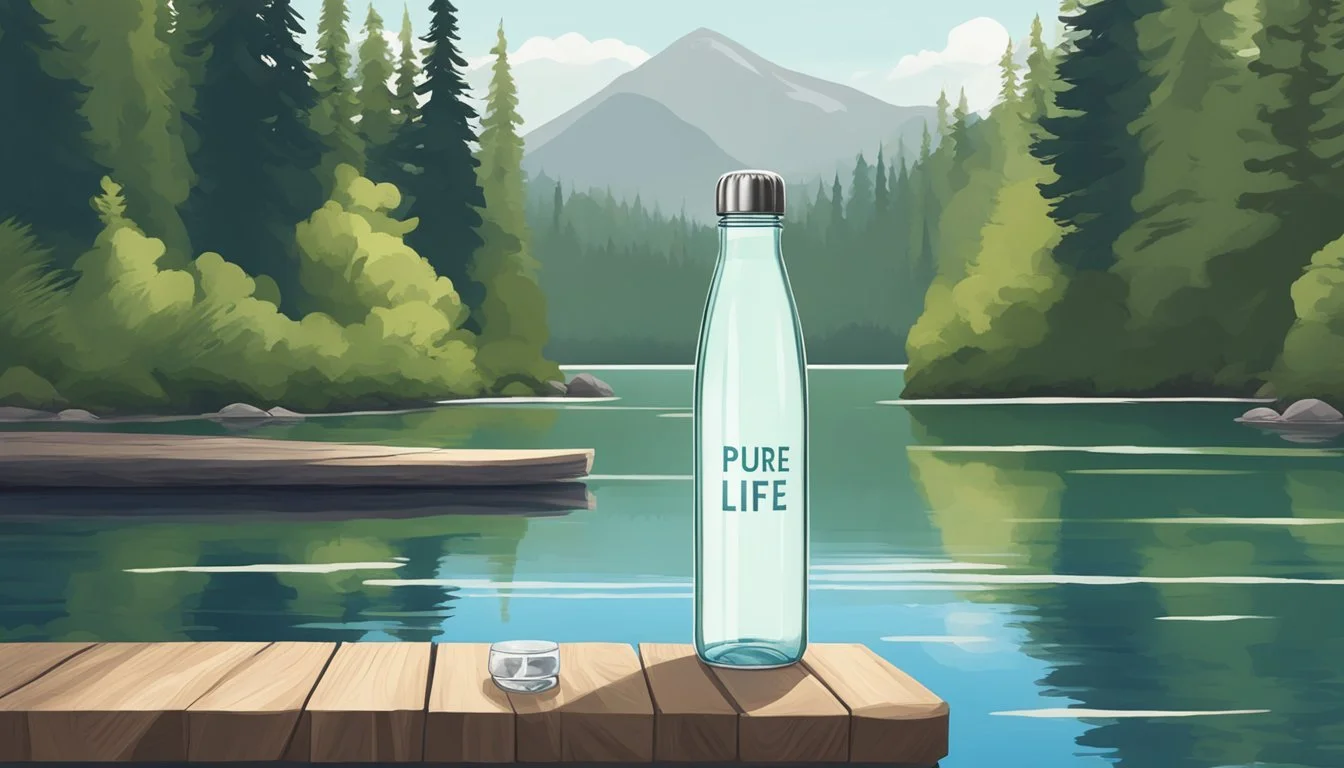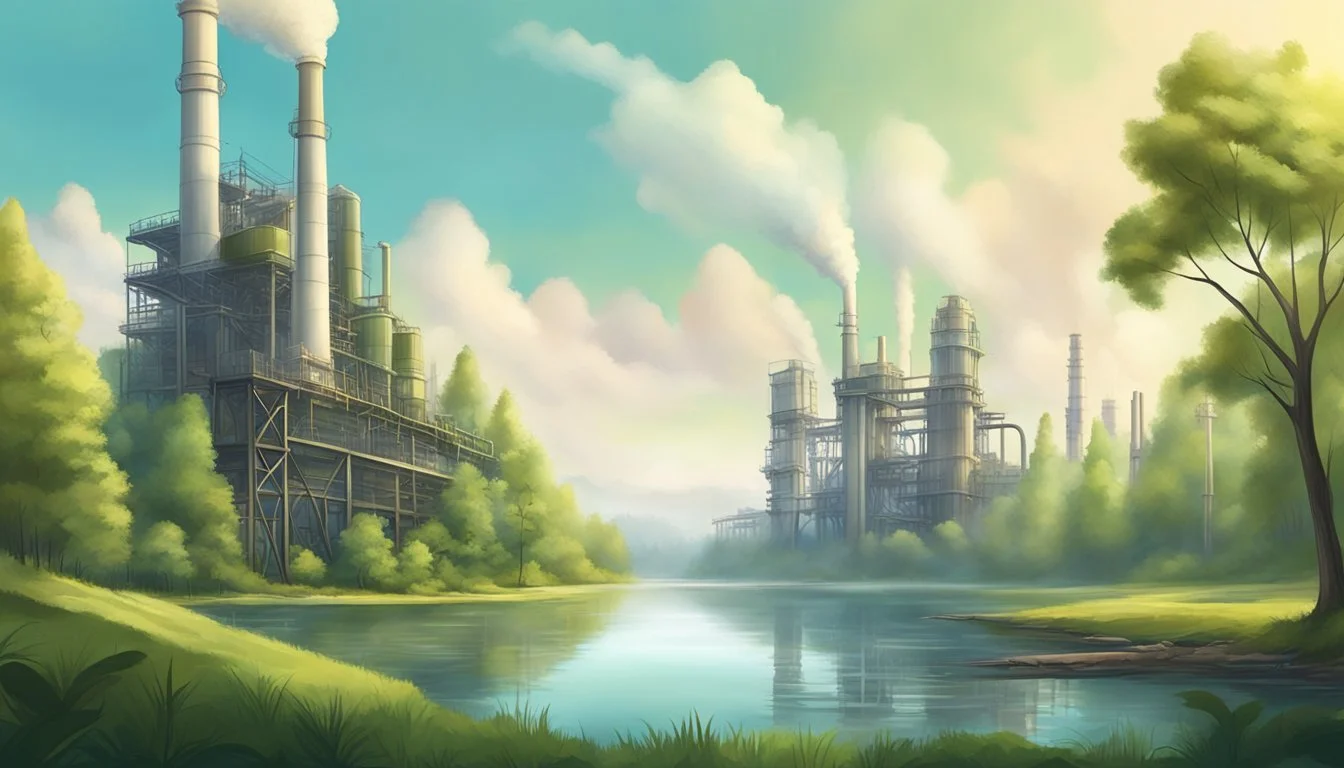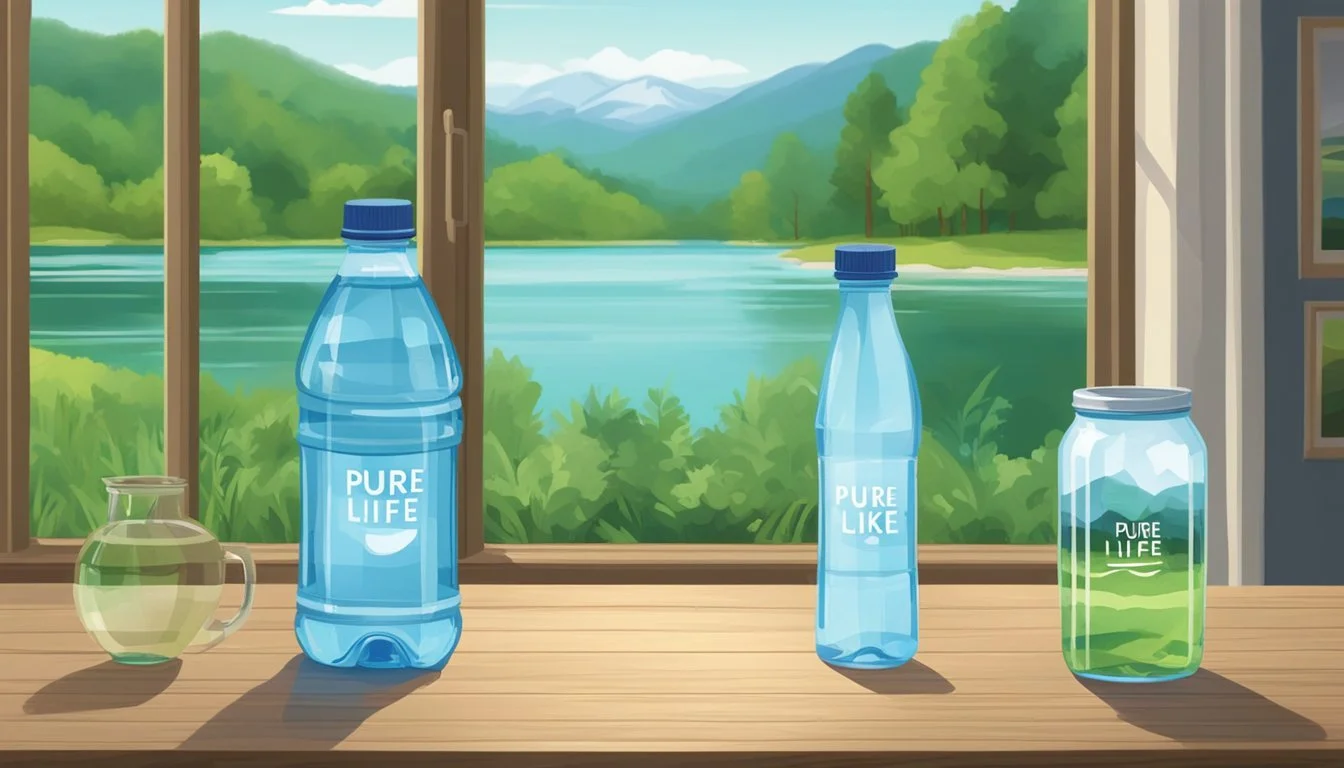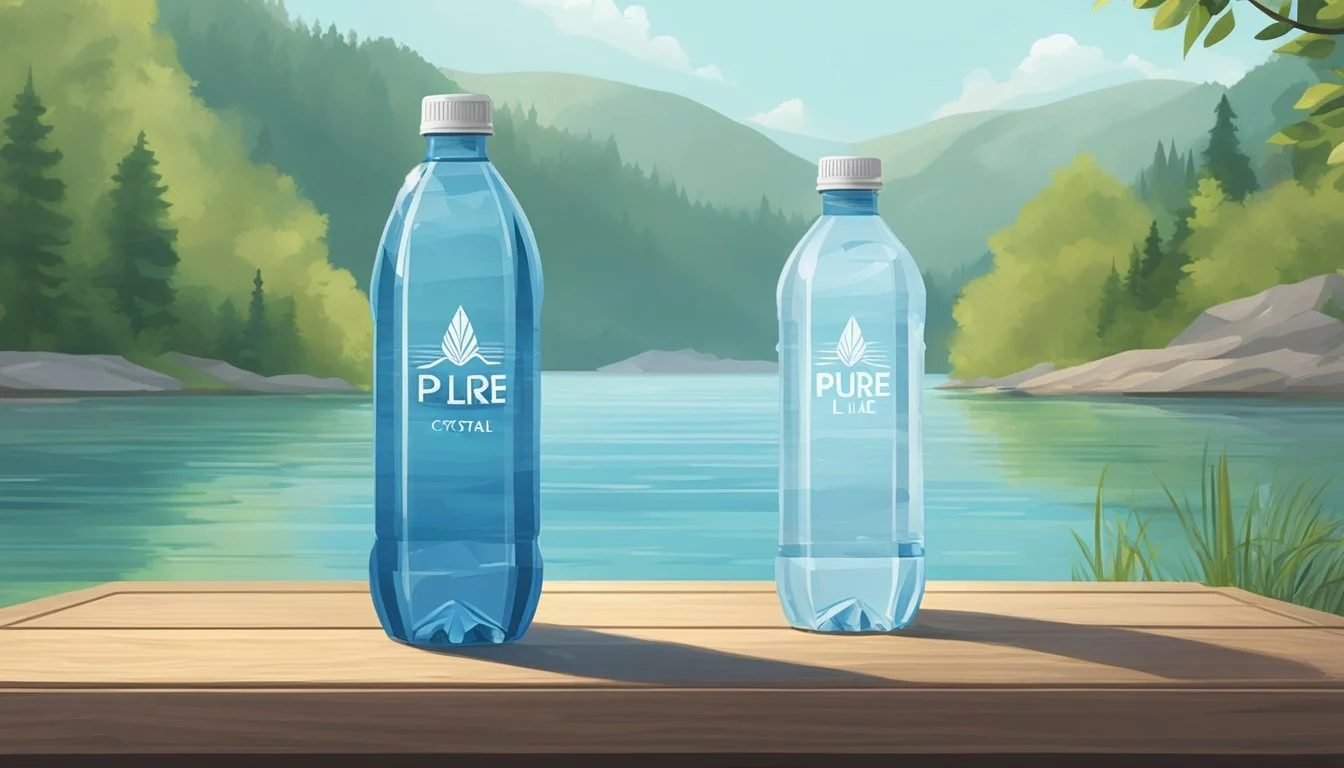Pure Life vs. Crystal Lake
The Ultimate Bottled Water Comparison
Choosing the best bottled water can be surprisingly challenging, given the wide array of brands available. Among the noteworthy contenders, Pure Life and Crystal Lake are frequently compared due to their popular presence in the market. While Pure Life is known for its affordable and accessible options, often sourced from city water supplies and well water, Crystal Lake prides itself on offering a purer taste with natural spring sources.
Pure Life water faces criticism for its taste, being described as chalky and metallic, perhaps due to its filtration process. On the other hand, Crystal Lake, sourced from natural springs, tends to be favored for its clean, refreshing flavor, making it a superior choice for those who prioritize taste and quality.
With such a stark contrast between these two brands, it's essential to weigh the factors that matter most to you—whether it's cost, source, or taste. Readers can expect a thorough comparison that dives deep into what each brand offers, helping them make an informed decision on which bottled water deserves space in their daily routine.
Understanding Bottled Water
Bottled water comes in various types, each with different origins and processing methods. These differences impact factors like taste, health benefits, and safety concerns.
Defining Types of Bottled Water
Bottled water includes several types such as spring water, purified water, mineral water, and alkaline water.
Spring water is derived from natural springs and is often rich in minerals.
Purified water undergoes treatments like reverse osmosis to remove impurities, ensuring high purity levels.
Mineral water contains dissolved minerals beneficial to health, sourced directly from protected underground reservoirs.
Alkaline water has a higher pH level, which proponents claim offers various health benefits.
Water Source and Origin
The source of bottled water significantly influences its composition and taste.
Spring water comes from natural springs where water flows naturally to the surface. Examples include pristine mountain sources or aquifers.
Groundwater and aquifers supply mineral water, often protected to prevent contamination.
Purified water, including those treated through reverse osmosis, can originate from any potable water source but undergoes significant processing.
Bottled water brands often emphasize their water's origin to highlight purity and natural properties.
Health Benefits and Safety Concerns
The health benefits of bottled water vary depending on its type.
Mineral water offers health benefits due to essential minerals like calcium and magnesium.
Alkaline water is said to aid in balancing body pH and hydration, although scientific evidence is mixed.
Safety concerns can arise from contamination during bottling or storage.
Purified water generally undergoes rigorous treatment processes, ensuring minimal impurities.
Spring water and mineral water are often tested for contaminants to meet safety standards.
Ensuring the safety and health benefits of bottled water involves understanding its source, processing methods, and composition.
Pure Life vs. Crystal Lake Overview
Pure Life and Crystal Lake are two prominent bottled water brands, each with its distinct history, reputation, and product range. Understanding these aspects can help consumers make an informed choice.
Brand History and Reputation
Pure Life is a brand under the umbrella of Nestlé, a globally recognized corporation. Nestlé's extensive experience in the food and beverage sector lends credibility to Pure Life. The brand has a significant presence worldwide, with a focus on providing purified water through rigorous filtration processes.
Crystal Lake, on the other hand, is less widely known but has carved out a loyal customer base. Originating from pristine natural springs, Crystal Lake emphasizes purity and a commitment to sustainable sourcing. Consumers often appreciate its dedication to maintaining high standards in water quality.
Product Range and Selection
Pure Life offers a variety of bottled water options, including standard plastic bottles, larger gallon containers, and eco-conscious packaging alternatives. Their product line is designed to cater to a broad range of consumer needs, from everyday hydration to bulk purchases for families.
Crystal Lake primarily provides bottled water sourced from natural springs. Their selection is generally more limited compared to Pure Life, but they excel in offering premium, spring-based water. The brand often highlights its lack of additives and minimal processing, appealing to those who prioritize natural purity.
Quality and Purity Analysis
The analysis focuses on the differences in quality and purity between Pure Life and Crystal Lake bottled waters. Key factors such as testing methods, contaminant levels, and adherence to purity standards are reviewed.
Comparative Water Quality Tests
Water quality tests for both Pure Life and Crystal Lake highlight notable differences. Pure Life utilizes microfiltration and reverse osmosis, ensuring removal of contaminants larger than 0.1 microns.
Comparatively, Crystal Lake relies on distillation, targeting mineral and contaminant removal through heat-induced vaporization.
Studies show lead levels in Pure Life consistently fall below detectable limits, showcasing effective contaminant filtration. Crystal Lake also adheres closely to FDA standards, maintaining low lead levels comparable to Pure Life.
Consumer Reports indicated varied consistency in test results, with Pure Life showing marginally lower TDS (Total Dissolved Solids) compared to Crystal Lake.
Assessment of Purity Standards
Pure Life commits to stringent purity protocols, certified under NSF International standards. They enforce frequent, independent lab testing to ensure compliance with both FDA and EPA guidelines.
Crystal Lake similarly meets high purity standards, regularly undergoing internal and third-party testing. Their distillation process is effective in removing microbial contaminants and dissolved impurities, verified through routine lab analyses.
For lead content, both brands comply with the FDA's stricter lead limits versus those set by the EPA for tap water.
In conclusion, both brands show robust efforts in maintaining water quality and purity, with slight variations in their filtration and distillation techniques impacting their final product profiles.
Taste Profile Comparison
The taste profiles of Pure Life and Crystal Lake vary due to differences in sourcing, production, and filtration processes. Understanding these differences can help consumers make informed choices based on their preferences.
Factors Affecting Water Taste
The taste of bottled water is influenced by several factors including the source of water, treatment methods, and packaging materials. Pure Life predominantly sources its water from city supplies and well water, which undergo extensive purification processes. This can lead to a crisp but somewhat neutral taste.
In contrast, Crystal Lake sources its water from natural springs, retaining some of the natural minerals that can enhance its flavor profile. These minerals can give Crystal Lake a more distinctive and refreshing taste, often described as clean and pure.
Packaging also plays a role. Plastic bottles can sometimes impart a slight aftertaste, which has been noted with Pure Life.
Consumer Taste Preferences
Consumer preferences vary widely when it comes to bottled water. Many value the crisp and neutral taste of Pure Life for its clean and unobtrusive profile, making it a popular choice for daily hydration. Others prefer the distinct and refreshing taste of Crystal Lake, appreciating the natural mineral content that can enhance flavor.
Taste tests and reviews often highlight these differences. Some consumers report detecting a slight metallic or plastic taste in Pure Life, while Crystal Lake's spring water is praised for its natural flavor.
Ultimately, the best choice depends on individual taste preferences and the specific qualities consumers are looking for in their bottled water.
Nutritional Content and Health Impact
Comparing Pure Life and Crystal Lake, the focus turns to their nutritional content and potential health impacts. Key considerations include the minerals and electrolytes they provide, as well as the overall hydration and health benefits they offer.
Minerals and Electrolytes Breakdown
Pure Life is known for being purified water with added minerals to enhance taste. Typically, it includes calcium, magnesium, and potassium, which are crucial for maintaining electrolyte balance.
Crystal Lake, in contrast, often highlights its natural source, providing a variety of minerals such as sodium, magnesium, and chloride without artificial additives. These minerals contribute to electrolyte stability, essential for muscle function and nerve transmission.
The presence of these electrolytes makes each brand suitable for replenishing what's lost through sweat, though the levels can vary. Consumers looking for a more naturally occurring mineral content may prefer Crystal Lake, whereas those favoring consistency might opt for Pure Life.
Hydration and Health Benefits
Effective hydration is a primary benefit of both bottled waters. Pure Life, with its balance of added minerals, supports hydration by ensuring electrolyte replenishment. This can be particularly beneficial for those with active lifestyles or during hot weather.
Crystal Lake's naturally sourced water, being rich in minerals, assists in maintaining optimal hydration. Its mineral content supports the body's functions, contributing to pH balance and possibly providing antioxidants.
Alkaline water enthusiasts may find the slightly higher pH levels in Crystal Lake appealing, claiming benefits such as improved hydration and better acid-base balance in the body, though evidence is still debated. In contrast, Pure Life offers a consistent, albeit neutral, pH and mineral profile, making it a reliable choice for daily hydration needs.
Environmental and Ethical Considerations
When evaluating the environmental and ethical considerations of bottled water brands like Pure Life and Crystal Lake, there are several critical aspects to examine. These include the methods used for bottle production and recycling, as well as water sourcing and related environmental impacts.
Bottle Production and Recycling
The production of plastic water bottles has significant environmental ramifications.
Pure Life primarily uses PET plastic for its bottles, which is known for being lightweight and shatter-resistant. While PET is recyclable, the recycling rate remains low compared to the total plastic produced. Some bottles may include recycled content, but it's not standardized across all production lines.
Crystal Lake opts for a mix of packaging options, including plastic, glass, and boxed water solutions. The use of glass bottles is environmentally preferable since glass can be recycled infinitely without degradation. Boxed water options are another step towards sustainability, leveraging materials that are more easily recyclable and biodegradable than plastic.
Integrating more environmentally friendly packaging solutions is vital. Enhancing recycling programs and using alternative materials can reduce the environmental footprint of bottled water production.
Water Sourcing and Environmental Impact
How companies source their water has significant ecological consequences.
Pure Life sources water from multiple locations, which may involve drawing from natural springs and local municipal supplies. This approach can stress local water resources, especially in regions prone to water scarcity. Efficient and sustainable water management practices are essential to mitigate these effects.
Crystal Lake typically focuses on sourcing water from specific spring locations, ensuring the quality and sustainability of the water. Their practices often include protecting surrounding ecosystems and minimizing the impact on local water tables. Transparent policies on water sourcing and the support of environmental conservation efforts are crucial components of their strategy.
The ecological footprint of water extraction methods should not be overlooked, and companies must strive for practices that balance resource use with environmental conservation.
Market Presence and Consumer Trust
Both Pure Life and Crystal Lake have carved their niches in the competitive bottled water market by leveraging strong brand visibility and maintaining ethical practices, which significantly influence consumer choice and trust.
Brand Visibility and Consumer Choice
Pure Life, a product of Nestlé, is widely recognized due to Nestlé's extensive distribution network. This brand has a consistent presence in major retail chains, supermarkets, and online platforms.
Crystal Lake, though newer, partners with well-known coffee chains like Starbucks, increasing its market reach.
Consumers frequently choose Pure Life for its familiarity and availability. Meanwhile, Crystal Lake attracts a niche market interested in premium, exclusive partnerships.
Transparency and Ethical Practices
Transparency is vital in building consumer trust. Nestlé has been clear about Pure Life's purification process, adhering to stringent quality standards.
In contrast, Crystal Lake emphasizes natural sourcing, with detailed reports on water quality readily available. This openness enhances their reputation among environmentally conscious consumers.
Both companies engage in sustainable practices, but Crystal Lake's focus on ethical sourcing and smaller environmental footprint offers an edge for eco-minded consumers.
Consumers looking for ethically sourced water often lean towards Crystal Lake, valuing the company's commitment to transparency and sustainability.
Costs and Accessibility
When choosing between Pure Life and Crystal Lake, consumers need to consider both the costs involved and how easily they can access these brands across different states and regions.
Price Comparison
Pure Life and Crystal Lake are both competitively priced, but there are some differences worth noting. Pure Life typically offers a range of products, from small 8 oz bottles to 1-gallon jugs, with prices varying by quantity. For example:
Bottle Size Average Price (24-Pack) 8 oz $3.99 16.9 oz $4.99 1 gallon $9.99
Crystal Lake also provides similar packaging options but with slightly different pricing. For similar sizes, the prices might be:
Bottle Size Average Price (24-Pack) 8 oz $4.49 16.9 oz $5.49 1 gallon $10.49
Retail prices can fluctuate based on promotions and specific store pricing strategies.
Availability Across Different States and Regions
Pure Life, being part of the larger Nestlé Waters umbrella, has a wide distribution network. It is commonly found in grocery stores, convenience stores, and online retailers across all 50 states. Consumers in both urban and rural areas should have no trouble finding Pure Life.
Crystal Lake, while also a popular brand, has slightly more limited access. It is primarily available in major urban centers and specific states such as California, Texas, and New York. Smaller towns or regions outside these states might find it more difficult to locate Crystal Lake readily.
Accessibility depends heavily on regional distribution channels and the presence of local warehouses or distribution centers.
Conclusion
When comparing Pure Life and Crystal Lake, several factors stand out to help consumers make an informed choice.
Taste and Purity:
Pure Life undergoes an extensive distillation process, which ensures a clean, crisp taste. Crystal Lake, known for its natural spring source, brings a refreshing, pure flavor derived directly from nature.
Brand Presence:
Pure Life is a globally recognized brand, offering reliability and consistency. Crystal Lake, though lesser-known, appeals to consumers who prioritize locally sourced water.
Packaging:
Pure Life provides a range of packaging options, catering to different needs from small bottles for on-the-go hydration to larger bulk packs. Crystal Lake, on the other hand, emphasizes eco-friendly packaging, aligning with environmentally conscious consumers.
Price:
Pure Life generally offers affordable prices due to its mass production, making it a cost-effective choice. Crystal Lake may be slightly higher in price, reflecting its smaller-scale, high-quality production processes.
Consumer Preference:
Ultimately, the choice boils down to personal preference. Some may prefer the globally trusted name and consistent quality of Pure Life. Others might lean towards the natural, local appeal of Crystal Lake. Regular taste testers and bottled water aficionados may find value in trying both to determine their favorite.
In summary, both brands offer distinct benefits, catering to different needs and preferences, making them both excellent choices in the bottled water market.
More About Pure Life
Cascade Mountain vs Pure Life: Which Bottled Water is Better?
Hawaii Volcanic vs Pure Life: Which Bottled Water is Better?
Hawaiian Springs vs Pure Life: Which Bottled Water is Better?
Icelandic Glacial vs Pure Life: Which Bottled Water is Better?
Nestle Pure Life vs Pure Life: Which Bottled Water is Better?
Pure Life vs Kirkland Signature: Which Bottled Water is Better?
Pure Life vs Whole Foods 365: Which Bottled Water is Better?
Richard's Rainwater vs Pure Life: Which Bottled Water is Better?
Solan de Cabras vs Pure Life: Which Bottled Water is Better?
Talking Rain AQA vs Pure Life: Which Bottled Water is Better?
Whole Foods Italian Still Mineral water vs Pure Life: Which Bottled Water is Better?
More About Crystal Lake
Aqua Carpatica vs Crystal Lake: Which Bottled Water is Better?
Cascade Mountain vs Crystal Lake: Which Bottled Water is Better?
Core Hydration vs Crystal Lake: Which Bottled Water is Better?
Crystal Geyser vs Crystal Lake: Which Bottled Water is Better?
Crystal Lake vs Essence pH10: Which Bottled Water is Better?
Crystal Lake vs Proud Source: Which Bottled Water is Better?
Hawaii Volcanic vs Crystal Lake: Which Bottled Water is Better?
Hawaiian Springs vs Crystal Lake: Which Bottled Water is Better?
Ice Mountain vs Crystal Lake: Which Bottled Water is Better?
Icelandic Glacial vs Crystal Lake: Which Bottled Water is Better?
Kirkland Signature vs Crystal Lake: Which Bottled Water is Better?
Liquid Death vs Crystal Lake: Which Bottled Water is Better?
Mountain Valley Spring Water vs Crystal Lake: Which Bottled Water is Better?
Nestle Pure Life vs Crystal Lake: Which Bottled Water is Better?
Poland Spring vs Crystal Lake: Which Bottled Water is Better?
Purely Sedona vs Crystal Lake: Which Bottled Water is Better?
Richard's Rainwater vs Crystal Lake: Which Bottled Water is Better?
San Pellegrino vs Crystal Lake: Which Bottled Water is Better?
Simple Truth vs Crystal Lake: Which Bottled Water is Better?
Solan de Cabras vs Crystal Lake: Which Bottled Water is Better?
Talking Rain AQA vs Crystal Lake: Which Bottled Water is Better?
Whole Foods 365 vs Crystal Lake: Which Bottled Water is Better?
Whole Foods Italian Still Mineral water vs Crystal Lake: Which Bottled Water is Better?








